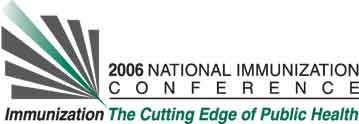Gary S. Marshall, Pediatric Infectious Diseases, University of Louisville School of Medicine, 571 South Floyd Street; Suite 321, Louisville, KY, USA, Laura E. Happe, Applied Health Outcomes, 4114 Woodlands Parkway, Suite 500, Palm Harbor, FL, USA, and Agartha Russell, Maternal and Child Health Section, Georgia Department of Community Health, 2 Peachtree St, NW, 37th Floor, Atlanta, GA, USA.
Learning Objectives for this Presentation:
By the end of this presentation, participants will be able to:
1. Define timeliness and understand the implications of delayed immunization
2. Appreciate the extent of delayed immunization in a state Medicaid population
3. Identify timeliness, in addition to coverage rates, as quality indicator
Background:
Although coverage rates for childhood immunizations are high, few children receive their shots on time (or acceptably early) based on the ACIP/AAFP/AAP Recommended Childhood and Adolescent Immunization Schedule. Delayed immunizations place children at risk for vaccine-preventable diseases and contribute to failure to complete the recommended schedule.
Objectives:
To assess the timeliness of DTaP and polio immunization in children in a Georgia Medicaid population.
Methods:
Infants born between January and March 2003, who were continuously enrolled for at least 24 months following birth, and had received at least one recommended vaccination were identified from Medicaid administrative claims of the Georgia Department of Community Health. Timeliness of recommended vaccine administration over 24 months was evaluated by comparing actual vaccination dates with the recommended schedule, as described (Luman. JAMA. 2005;293:1204-1211).
Results:
A total of 1,894 children were identified. Overall, 35.9% and 50.6% of children were on-time for the 4-dose series of DTaP and the 3-dose series of polio. The comparable rates reported from Georgia in the 2000-2002 National Immunization Survey (NIS) were 38.7% and 55.3%, respectively (Luman. Am J Pub Health 2005;95:1367-1374). When assessing children considered “covered” at 24 months by traditional measures, 36.2% and 28.6% of children had delays for DTaP and polio, respectively. The mean number of days delayed was 220 days for DTaP and 139 days for polio.
Conclusions:
Medicaid claims data support earlier observations from the NIS that despite good coverage by 24 months, many children are not vaccinated on time. Traditional measures of coverage can mask inadequate vaccination in terms of timeliness.
See more of Posters
See more of The 40th National Immunization Conference (NIC)

